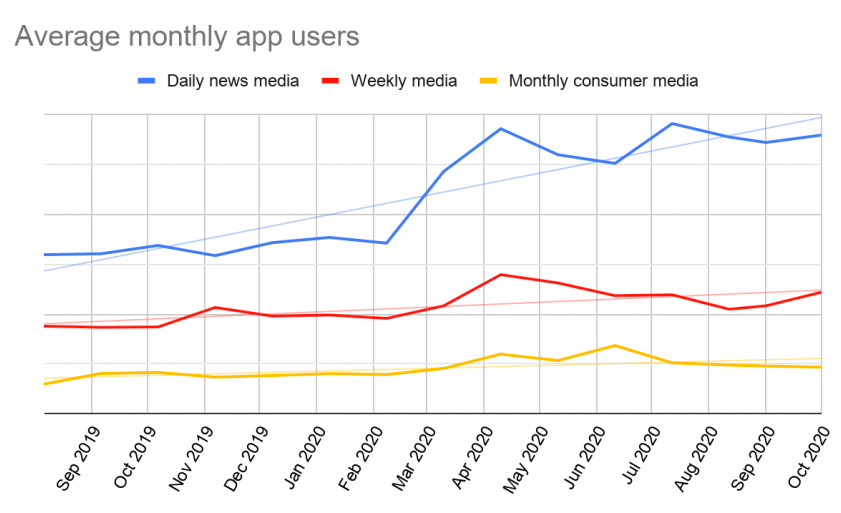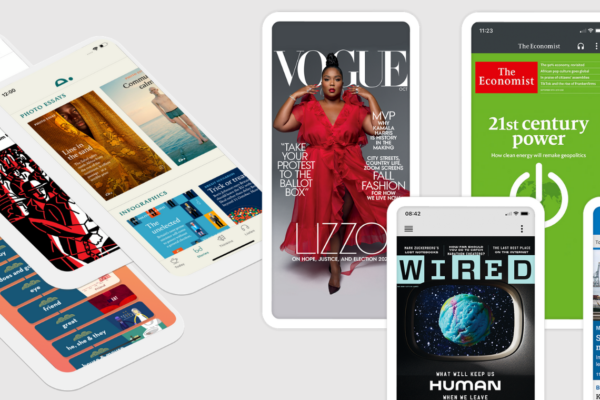Jonny Kaldor, Founder and CEO, Pugpig, on The State of Digital Publishing in 2020 report
Even before the arrival of the global Covid-19 pandemic, the magazine publishing world was in a period of transition. The shift from digital advertising to reader revenue as a prime monetisation source, as well as the growing adoption of technologies like Artificial Intelligence in content creation and distribution, had already spurred many publishers around the world into reassessing their core business models.
One company that has been tracking all these changes is Kaldor, the owner of the Pugpig publishing platform that powers apps for brands including The Economist and Condé Nast to Hearst Magazines and Tortoise.

At the FIPP Congress in September Jonny presented the findings of the 2020 State of Digital Publishing Market Report, a piece of research that combined data on trends with qualitative interviews with many of the world’s leading media figures.
You can watch the discussion Jonny had with FIPP’s John Schlaefli here.
In this interview, he explains the rationale behind the report, what its main findings were, and how Covid-19 has accelerated many trends in publishing creating new opportunities for publishers.
Jonny can you talk us through your role?
I’m the co-founder of Kaldor, the company behind the Pugpig publishing platform. My primary focus these days is on growth, so I spend half of my time with the commercial team and the other half working out how best to scale our operations so that we can support our ever-increasing customer base, while also constantly evolving our products. The media landscape is changing so fast right now and it’s keeping us pretty busy.
Pugpig recently produced the 2020 State of Digital Publishing Market Report. What was the rationale behind this?
It’s something we’ve wanted to do for some time – to create an annual report that tracks data trends across news and consumer media and then places those trends alongside in-depth face to face interviews with senior media execs. The thing is, while there’s plenty of data flying around, we don’t see many reports compiled from conversations with our industry leaders – and that’s where you can get real insight. Our report aims to give an insider view into where the industry is going rather than just the data on where it currently is. Now that so much is going on in the industry, and we have a critical mass of publishers and readers here in the UK and in the USA, it feels like the perfect time to kick it off.
What were its main findings? Was there anything that surprised you?
A number of really interesting things came out of the report, so here are my three key findings:
The Covid bump is very clear to see in the raw data – we saw significant increases in monthly active users from February across all media, with the daily news brands getting a significantly bigger jump than the weeklies and monthlies. And while we’ve seen a drop off in the monthlies since the summer, the majority of publishers are maintaining most of the gains they achieved earlier in the year well into the Autumn – so it’s looking great for readership across the board.

Another trend that emerged from the interviews, which will come as no surprise, was that almost without exception, publishers’ primary strategic focus over the coming year is subscriber revenue; with news media focusing on retention as their top priority and acquisition second, while consumer media are putting acquisition first (presumably because they are earlier on the reader revenue journey).
We also asked some big questions – and the most surprising for me was the polarisation that we saw when we asked people whether they believed that “a successful media business has to be a technology business”. Not a single person on the fence here, and yet no consensus – half our interviewees felt strongly that yes, a media business must be a technology business, and half thought the exact opposite. There was general agreement however in whether media businesses should build or buy their core technology – almost everyone said buy don’t build. There is lots in there to dig into.
Publishers are innovating in a way that we haven’t seen since we started this business in 2011 – it’s a really exciting time.
Do you think that the habits that people have developed over lockdown etc are going to be permanent?
The numbers we’re seeing suggest that these habits are going to stick around for a while. Most of the gains we’ve seen over the summer have been maintained into Autumn with subscriber numbers and engagement both up. Whatever happens, we’ll keep tracking the data month by month so that we can see what the longer-term trends are.
I think there’s a general feeling that the effect of Covid on publishing has been mainly to accelerate existing trends, squashing change timelines from years into months – and that has to be good for the industry. Publishers are innovating in a way that we haven’t seen since we started this business in 2011 – it’s a really exciting time.
Focusing on monetisation for a moment, what would you say the industry is most optimistic about as a revenue source? Might digital advertising make a comeback?
From all the conversations we’ve had recently, along with the projects we’re working on right now, the emphasis is overwhelmingly on reader revenue. Our focus is always on how to develop the most valuable audiences for publishers and so we tend to think more about engagement, loyalty, and advocacy rather than just scale. What’s so exciting to me is that it’s quality journalism that will always win when these are the factors that you care most about.
And what does the rest of 2020 and 2021 hold for you and your business?
We’re focused on two things: growth and evolving our products. We get out of bed each morning (and walk a few steps to the living room mainly these days) in order to build the platforms that will power the future of publishing, and that’s what we hope we’ll keep doing for many years to come. If we do that right, then the growth comes naturally. Oh and we’ve got some exciting launches coming over the next few months, so watch this space!
The Pugpig State of the Digital Publishing Market report can be downloaded from the Pugpig website here.







